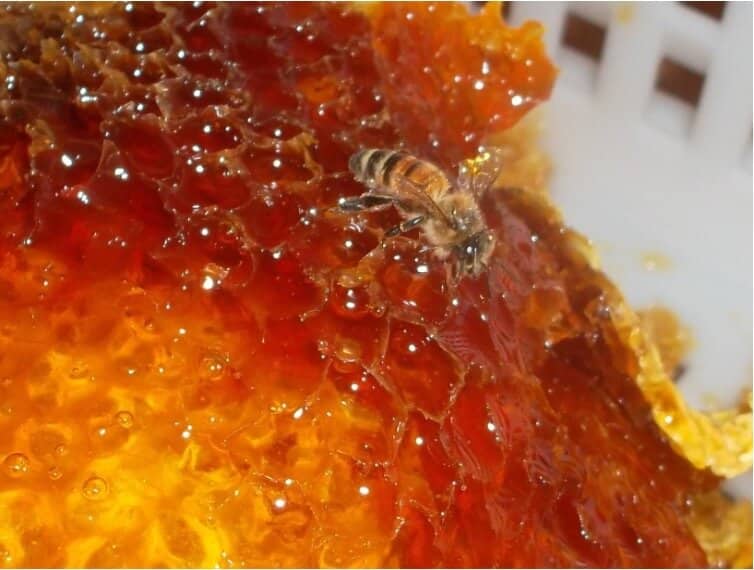API of the Month
Mathieu Domecq
Editor-in-chief of the API blog of the month
One season’s over and we’re ready for the next! Your loyal API partner’s whole team wishes you a warm and happy 2022.
To start off the new year, I’ve decided to tell you about our bees’ diet. You’ll understand what our bees eat, what’s in pollen and the importance of the environment to them. This is the topic of your API blog of the month, which features some incredible scientific information, as you will see.

Our bees’ diet
Honey and pollen are two essential elements of bee life.
Honey is an important source of energy that enables our bees to produce heat, during their winter rest, for example. But that’s not all! This sugar is composed of p-coumaric acid, which stimulates our species’ detoxification mechanism and thus improves immunity. In other words, “our bees are never ill”…
But what sugars do our bees need? Their bodies primarily need sucrose, glucose and fructose (the main components of honey). These are also the sugars found in some commercial syrups and candy (such as APIINVERT and APIFONDA, which are based on bees’ natural diet and are therefore an alternative to healthy honey they can easily digest). Maltose and melezitose (sucrose + glucose) are also alternatives. However, be aware that other sugars such as mannose and lactose can be toxic to bees.

Pollen is also important in bees’ diet… it’s a resource rich in protein (20-30%), carbohydrate (+/-30%), fat (1-20%), vitamins, minerals and fibre.
On sunny days, you may well have noticed the forager bees coming in again and again with beautiful pollen balls. This is a sign of good health. The protein intake from pollen is very important for feeding larvae. It’s this supply of protein that will stimulate the queen to lay eggs, thus developing the brood.
It is often said that when bees bring in pollen, the queen is laying eggs. This is actually the signal that the colony receives. If the resources come in, the population can be developed. To get a better understanding, let’s take a look at this winter period. In January, the queen hardly lays any eggs, as almost no protein resources are naturally available. The colony will not develop if it feels that it does not have enough resources to feed the bees being born.
The pollen needs change during the life cycle of our Apis mellifera species. It will be more important for bees at the beginning of their life, particularly in order to ensure the production of royal jelly: food essential for the queen and young larvae under 3 days old.
Young winter bees also have a significant need for pollen. This is because they need to produce a high level of vitellogenin (a kind of protein that is essential for longevity and immunity throughout the winter). As a reminder, in winter, our bees will have to live on average 120 days compared to around forty in season.
A 2012 study showed that bees naturally seek to diversify their diet. Similarly, a more recent 2017 study confirmed that it’s better for our bees’ health to be in a natural and flowery environment.
A mixture of four pollens from different sources that can be harvested every day by the colony is the key to a balanced diet that causes no issues for our bees’ health!

An unfavourable environment
There are warning signs you may need to look out for. These will alert you to the fact that you need to help your hives. If the natural conditions are not sufficient (lack of flower diversity and pollen quantity and/or quality), nutritional substitutes must be provided to compensate for any sugar and protein deficiencies.
As you can tell and have doubtless observed, our bees have not enjoyed the best conditions in recent years. This is due to habitat degradation and fragmentation, a decrease in the diversity, quantity and quality of pollen and the presence of biotic stressors such as varroa, fungi, bacteria and other viruses.
All in all, to support the health of our bees in a conducive environment, let’s favour a bee species that’s adapted to its region and environment (in terms of selection); and let’s control pathogens such as varroa in order to prevent the hive from weakening.
Thank you for your loyalty and keep sending us your photos on social media with the hashtags: #apifonda #apiinvert!
We’re back next month on your API blog with your faithful partner, Les Ruchers De Mathieu!

LES RUCHERS DE MATHIEU
Honey & Beekeeping Shop
Photos ©lesruchersdemathieu


